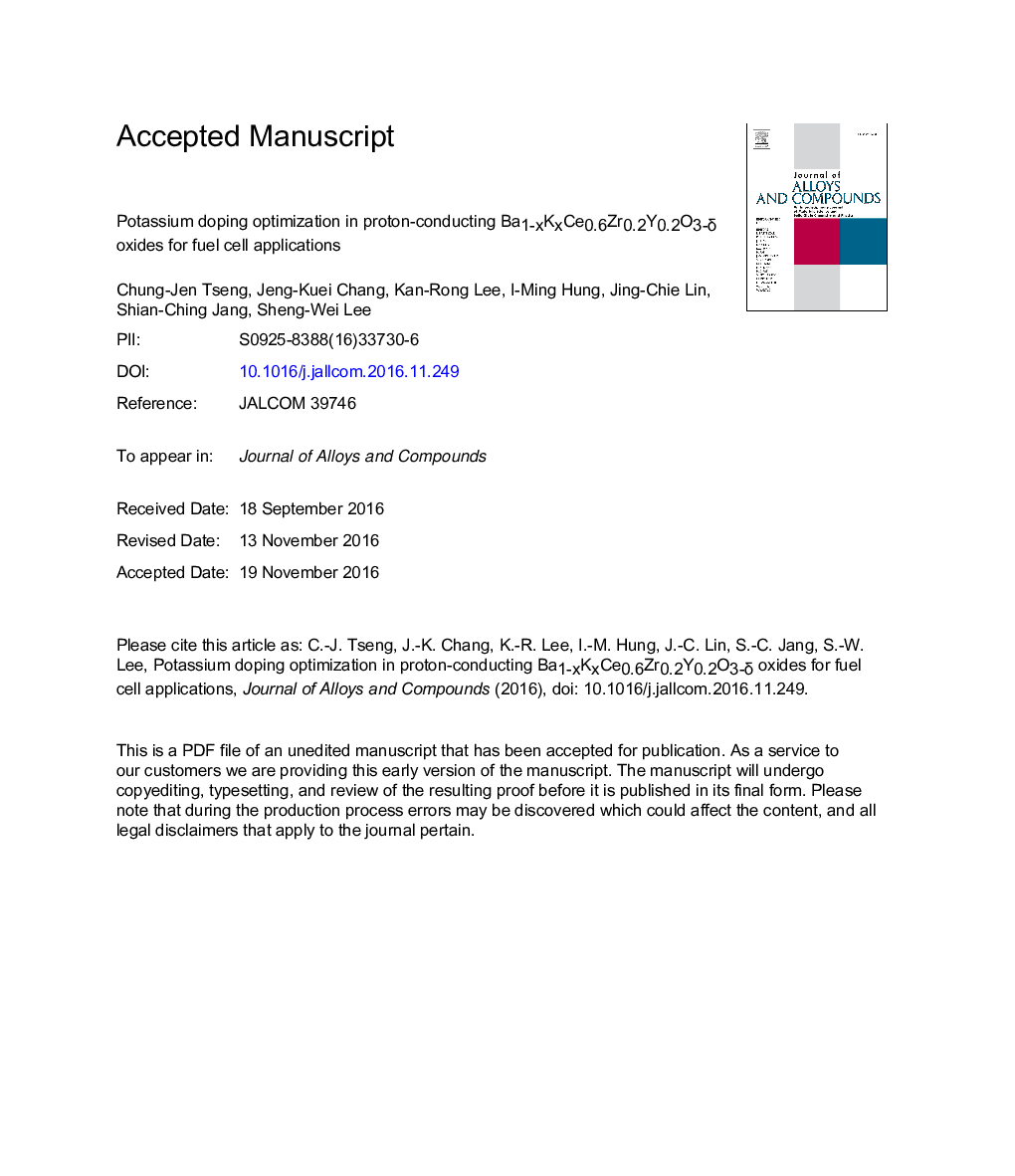| Article ID | Journal | Published Year | Pages | File Type |
|---|---|---|---|---|
| 5461297 | Journal of Alloys and Compounds | 2017 | 28 Pages |
Abstract
This study first reports the K doping optimization in proton-conducting Ba1-xKxCe0.6Zr0.2Y0.2O3-δ (x = 0.025-0.2) oxides synthesized by using a combination of citrate-EDTA complexing sol-gel process and composition-exchange method. Among all samples, the ceramic pellet with a K doping content of 10% exhibits excellent sinterability, highest relative density, highest protonic conduction, and also excellent chemical stability against CO2. Moreover, the Pt/electrolyte/Pt single cell with such a Ba0.9K0.1Ce0.6Zr0.2Y0.2O3-δ electrolyte shows a significantly higher maximum powder density in the hydrogen-air fuel cell experiment, which can be attributed to its denser microstructures and higher protonic conductivity caused by introducing highly basic K cations. Based on these experimental results, we discuss the improvement mechanism in terms of calcined K-doped particle characteristics. This work demonstrates that the Ba1-xKxCe0.6Zr0.2Y0.2O3-δ oxide synthesized by the sol-gel combined with composition-exchange method with an optimal K doping would be a promising electrolyte for proton-conducting fuel cell applications.
Related Topics
Physical Sciences and Engineering
Materials Science
Metals and Alloys
Authors
Chung-Jen Tseng, Jeng-Kuei Chang, Kan-Rong Lee, I-Ming Hung, Jing-Chie Lin, Shian-Ching Jang, Sheng-Wei Lee,
